NEWS FROM THE MEADOWS - 15. April 2021
Although I roam these meadows every springtime, for many years now, there is something new to discover every season ...

... and today ...
... I saw this interesting and pretty peculiar spider for the first time. It took a lot of patience to get this shot on which the spider looks more or less like some ordinary spider, because most of the time ...
... a spider of this species looks like this ... like some generic fragment of some dried out plant, caught on a sticky thread.
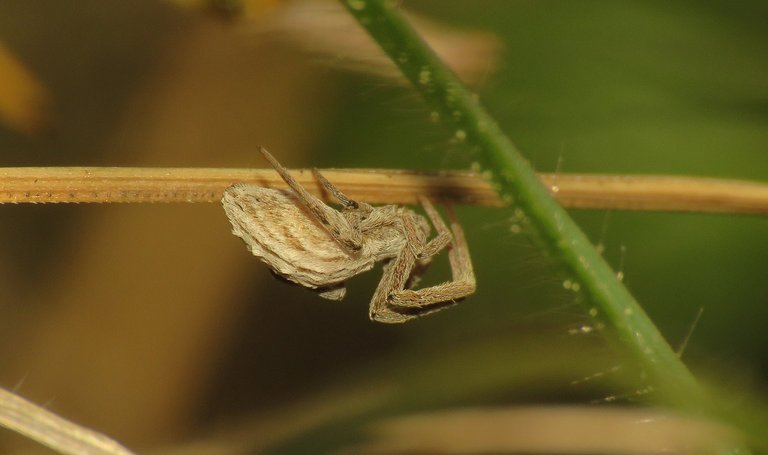
This is the Uloborus walckenaerius spider. A few weeks ago, in the great post published by @abneagro, I heard (I mean, read) about spiders from the Uloboridae Family for the first time ... and I remember that in a conversation through comments, he said that now I'll know their peculiar characteristics if I found an Uloboridae spider here in my area. I also remember thinking that will be really cool to find that kind of spider soon, and the Uloboridae were quite often in my mind the first two days after reading that post ... then some days later, I forgot about the whole thing, and I didn't even know if any species of this Family is present here in my area ... until today, when I found the Uloborus walckenaerius, first the spider on the relatively dry vegetation on the hill not far from the sea, and then, a few minutes ago while writing this post, the scientific name of the species.
Uloboridae are a fairly small family. These spiders spin complete orb webs or sections of orbs similar to the Araneidae and related families. The plane of the web is often more or less horizontal. The spiral threads are made up of cribellate silk rather than silk with glue droplets as in the Araneidae. Uloborids are also unique among spiders in lacking poison glands. Once a prey is tangled in the web, it's very carefully covered with silk and feeding begins only when the prey is fully immobilized.
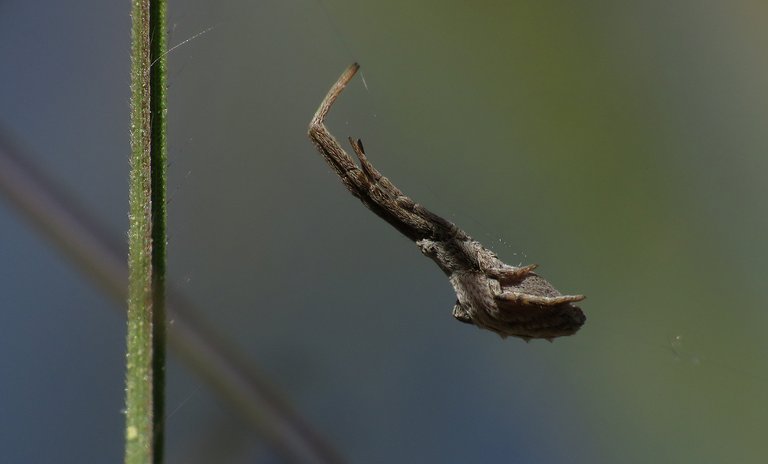
This shot was taken using only the ambient light, to show you how it really looked through my eyes. This is a small spider with great camouflage, I surely passed this species by many times prior to this encounter, but I never noticed it.
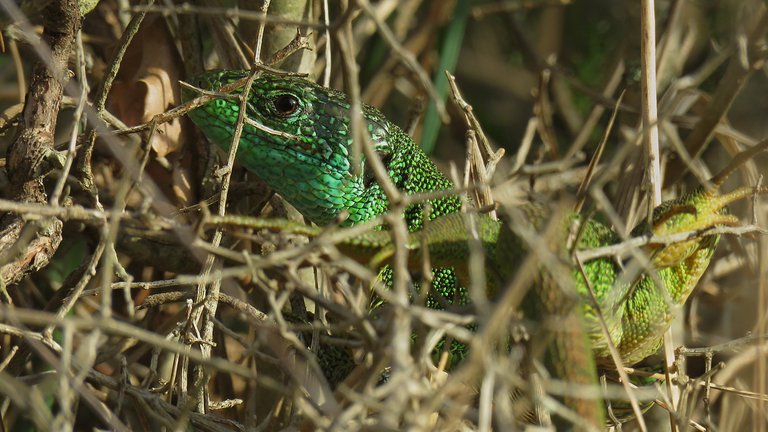
Even some much bigger and very colorful animals are often well hidden in the intricate vegetation. Here you can take a glimpse of the European green lizard (Lacerta viridis).
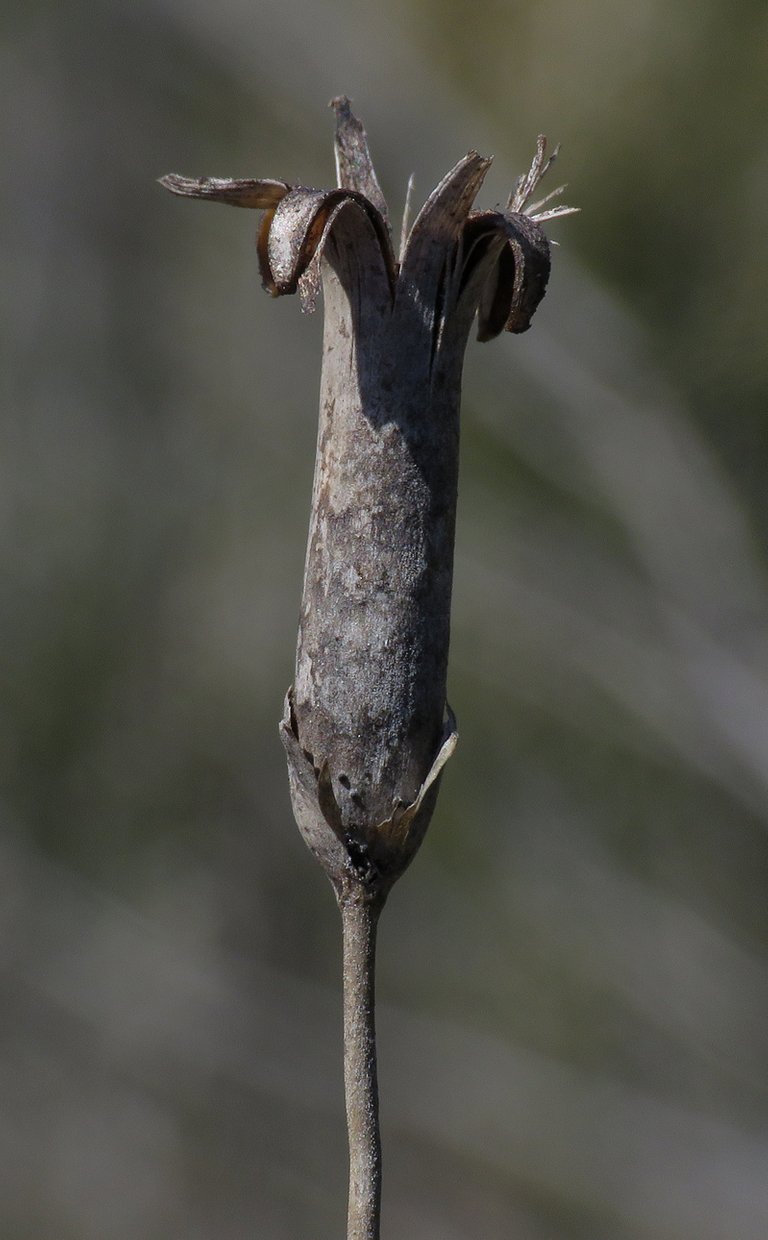
Although the early spring is generally a green and prosperous period for the plant in this area, the vegetation on these coastal slopes exposed to the wind has always some dried out details ...
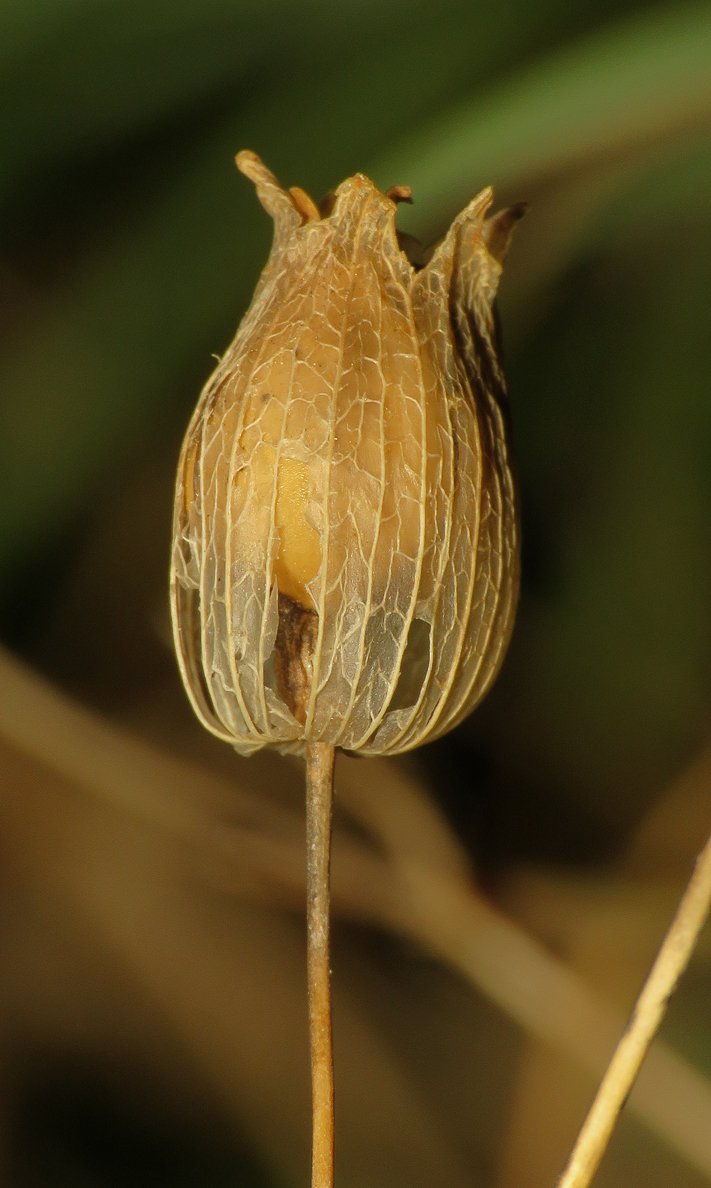
... and while exploring those brown, gray, and yellow plants ...
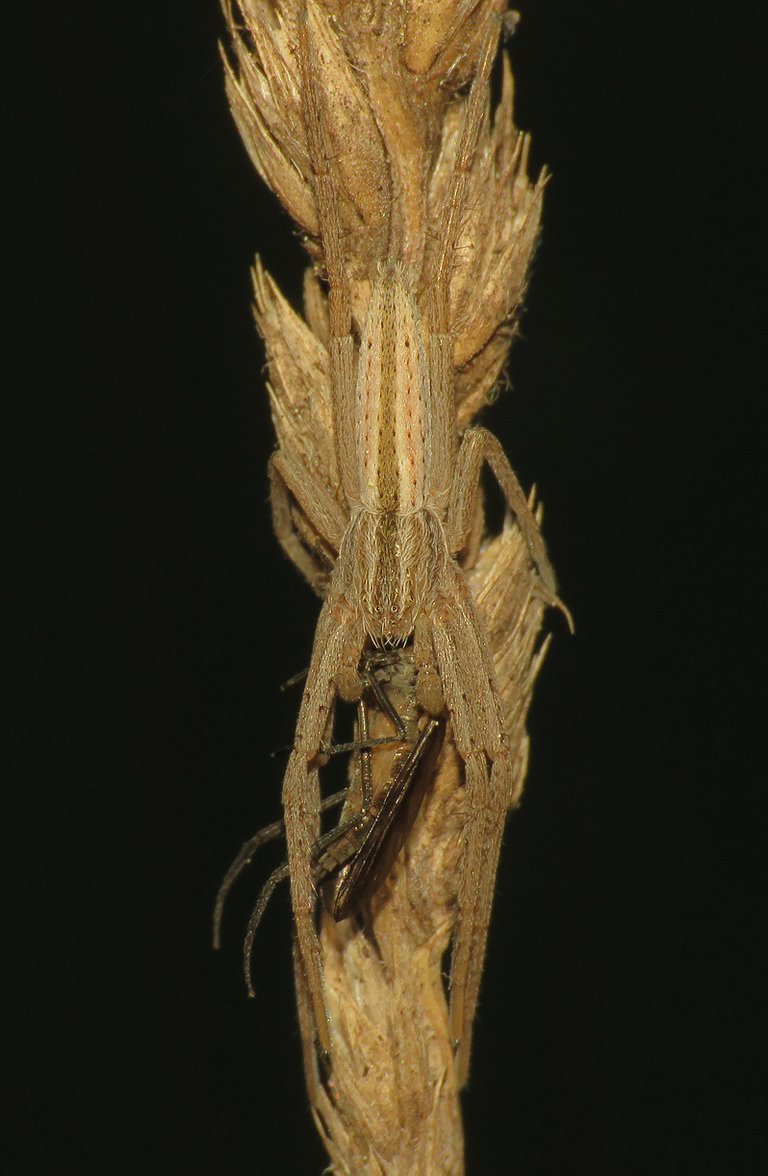
... I found another well camouflaged spider ...
... the Tibellus oblongus, from the Philodromidae family. In the NEWS FROM THE MEADOWS - 11. April 2021, you could (and still can) see this species on a vivid green background that better reveals the shape of the spider. Here's the link: https://ecency.com/hive-101587/@borjan/news-from-the-meadows-11
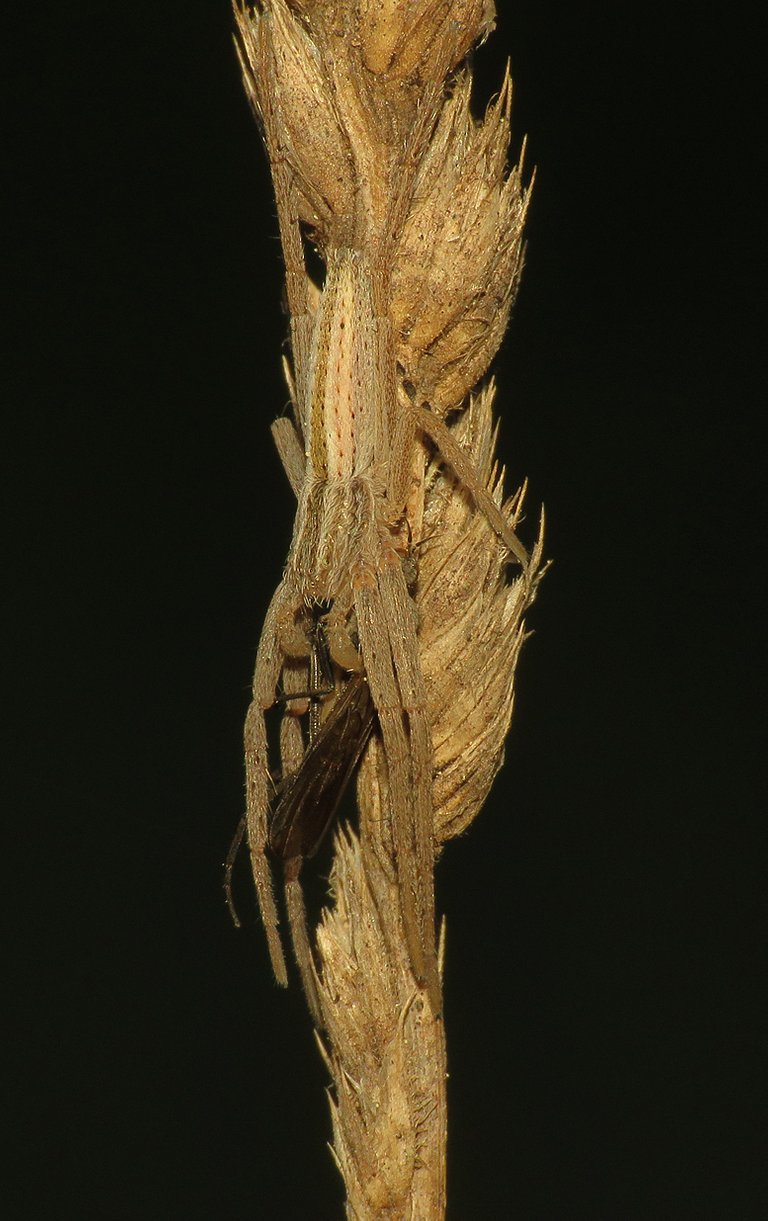
I noticed this spider only because it had some fly in its fangs, that detail made me come closer and take a better look. I was expecting to take a shot of the fly on the dried out ear of grass, only through the macro lens I recognized the spider.
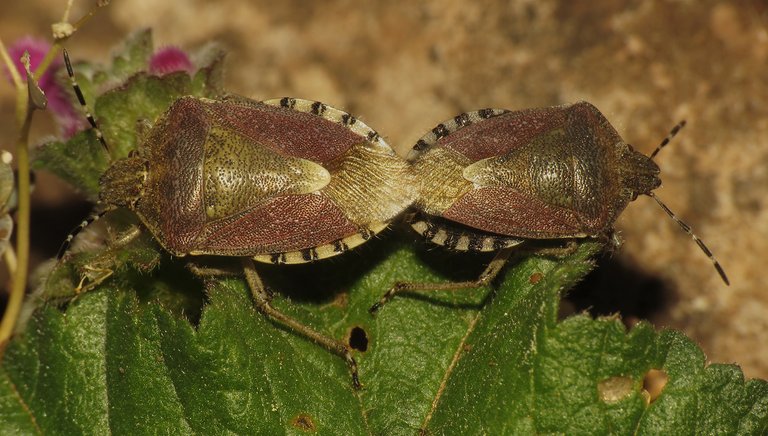
These Dolycoris baccarum shield bugs were mating on the stony terrain nearby ... and a bit further ...
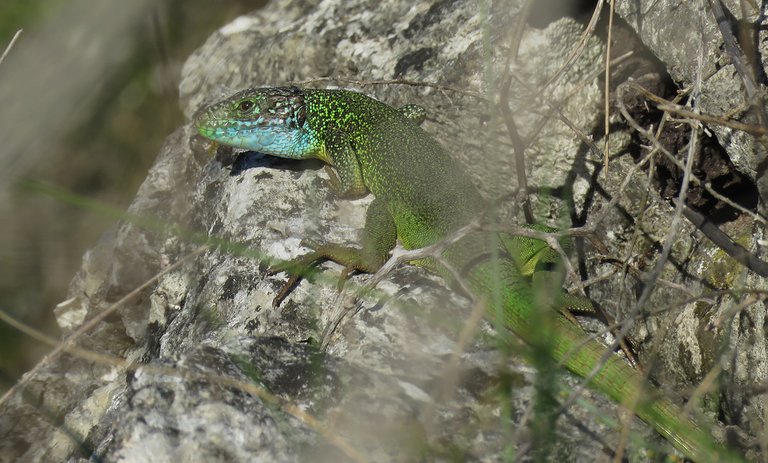
... on a pretty big rock sprouting from the ground like an island in the sea of grass ...
... I saw another green lizard.
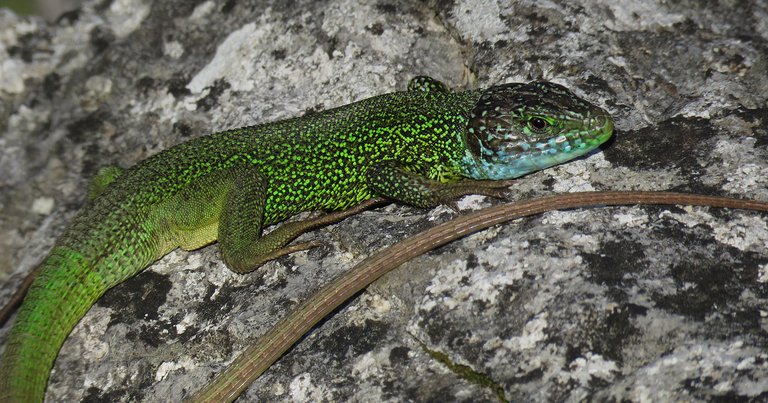
This one was basking in the sun, on the open, out of the intricate vegetation, so I was able to take a few clear shots ...
... on which you can see the entire European green lizard, not just the head.
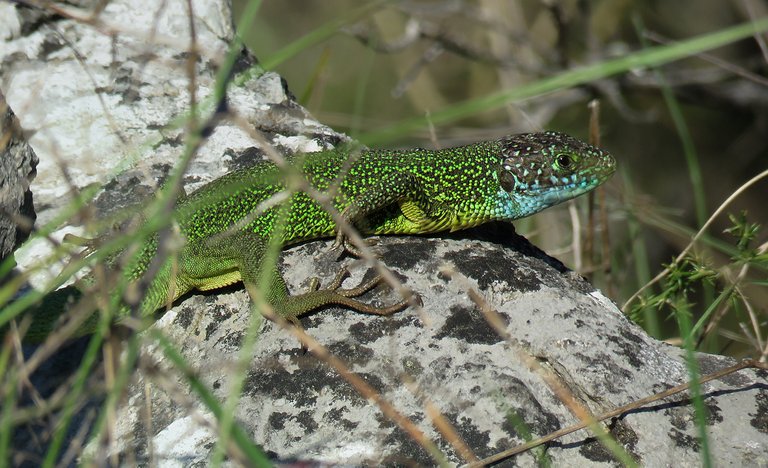
After some time, when the lizard got enough sun and took shelter in the shade, somewhere under the rock ...
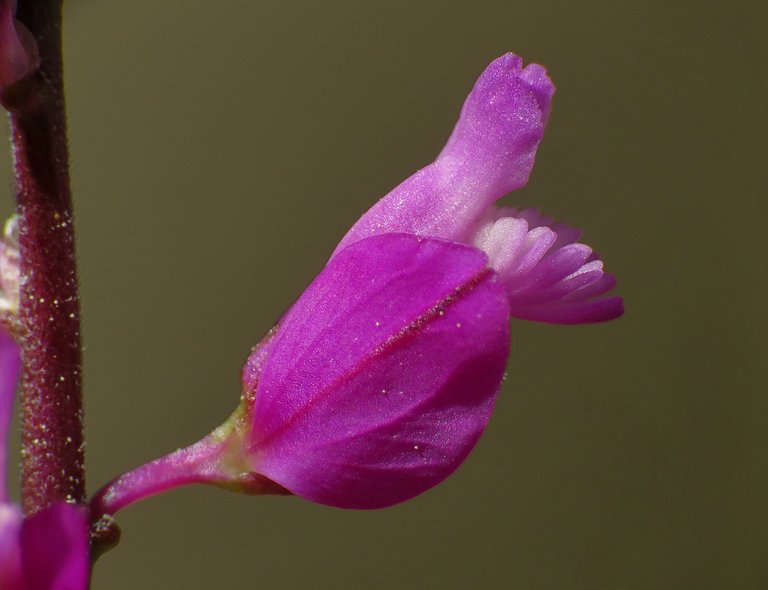
... I sat down to take a few shots of this beautiful flower that I noticed before, but was distracted by the relatively rare opportunity to photograph the Lacerta viridis in the open.

Polygala vulgaris is the name of this plant ...
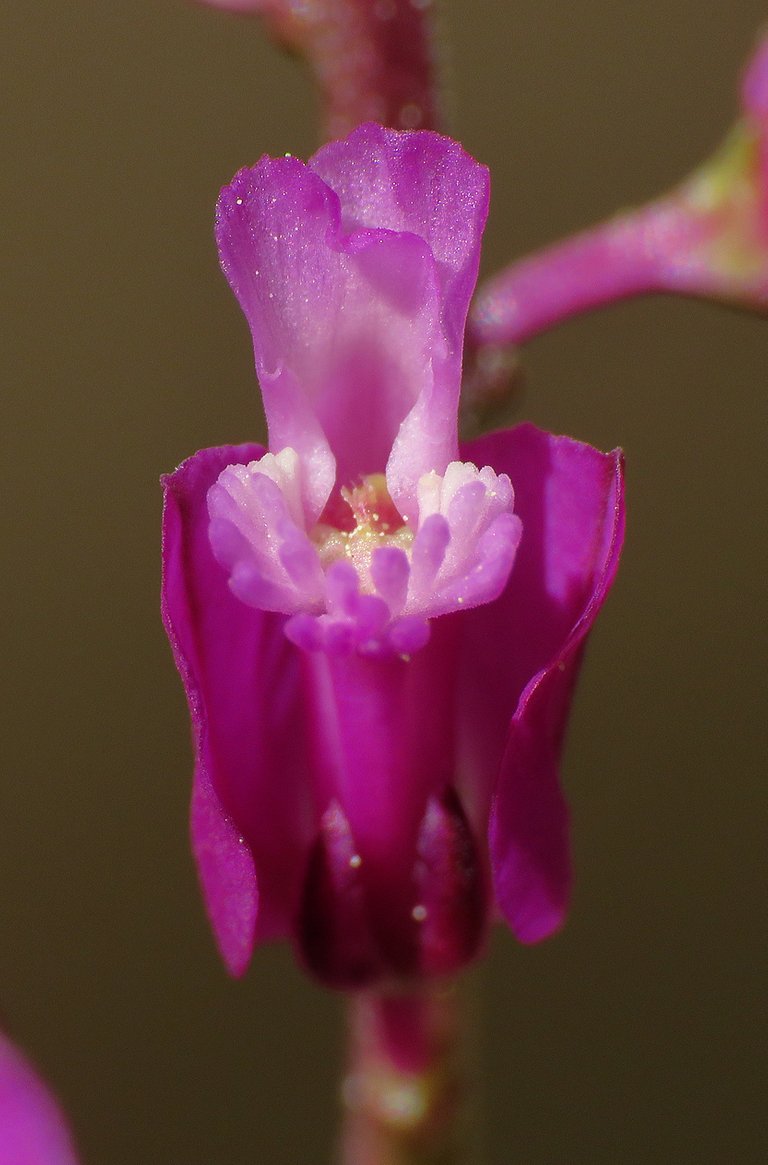
... and its flowers ...
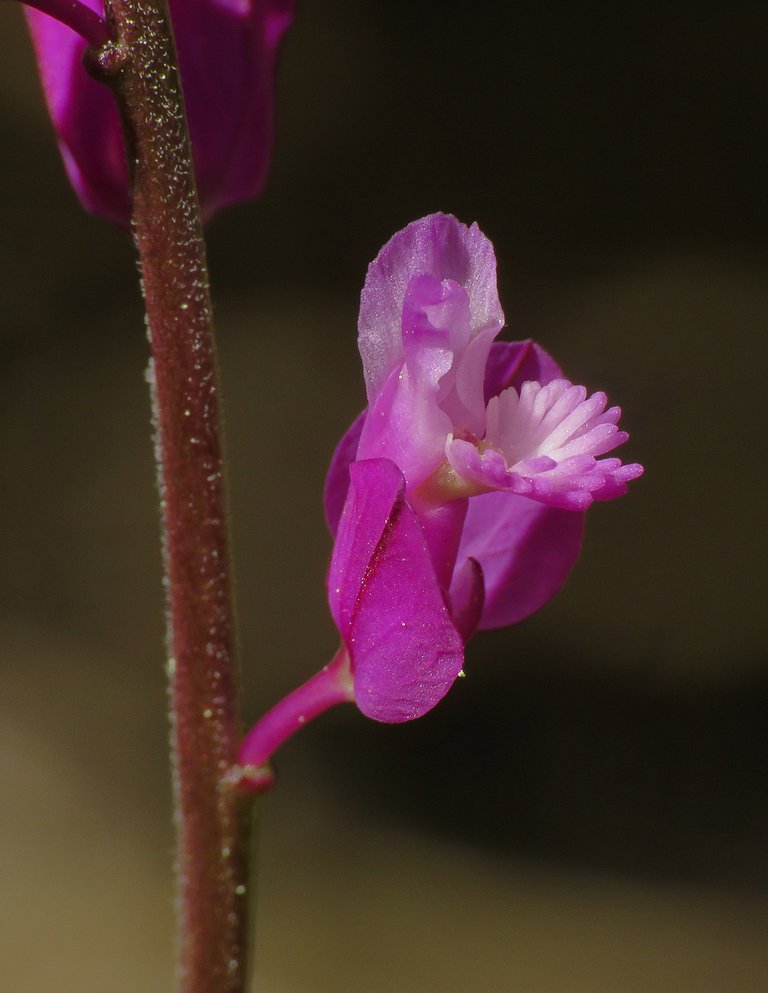
... look pretty different when seen from different angles.
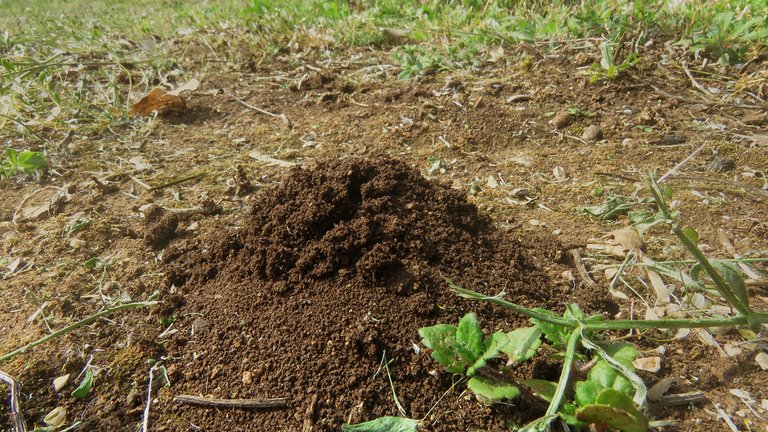
After a bit of walking ... on the patch of terrain with almost no vegetation ... I found this pile of excavated earth that looked like some ant hill ... I was almost certain that this is a work of some ant species ... but then ...

... I saw a small solitary bee working on this construction.
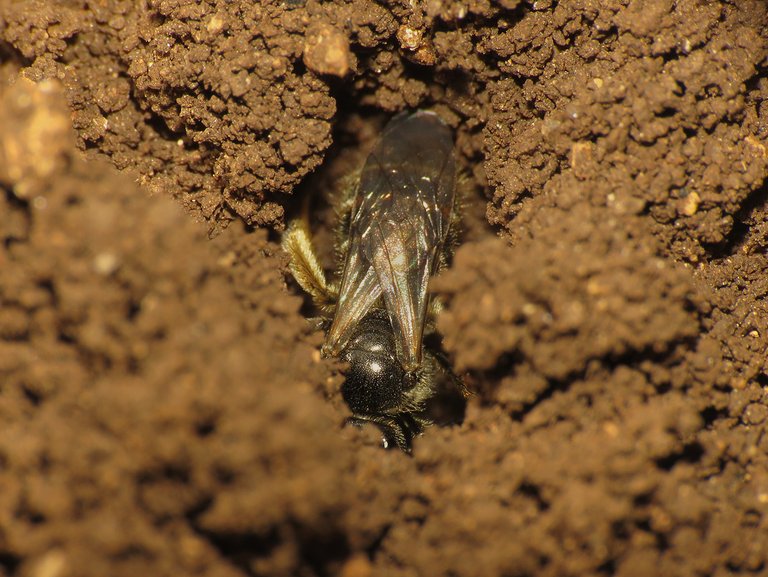
I spent almost an hour sitting here, trying to catch a glimpse of the busy bee. On the following, enlargeable photograph ...
... you can take a better look at this ground nesting species ... I can show you only how it looks, because I haven't found the name of the species.
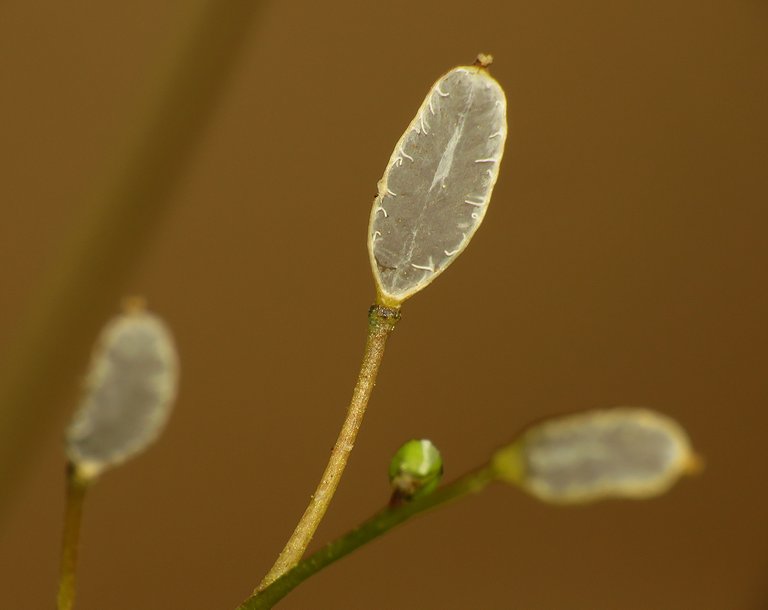
These elegant seed pods were photographed on the same terrain ...

... they looked like something made of translucent paper ... very light, elegant stuff ...
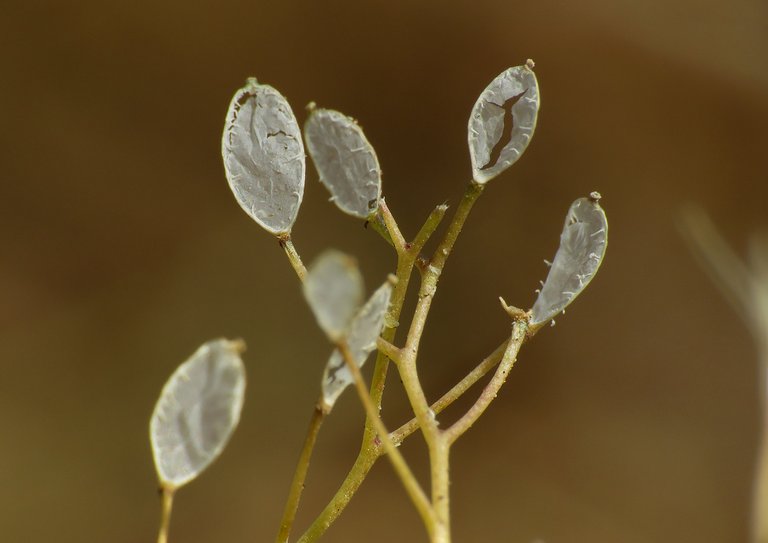
... it seemed that the seeds had already fallen ...
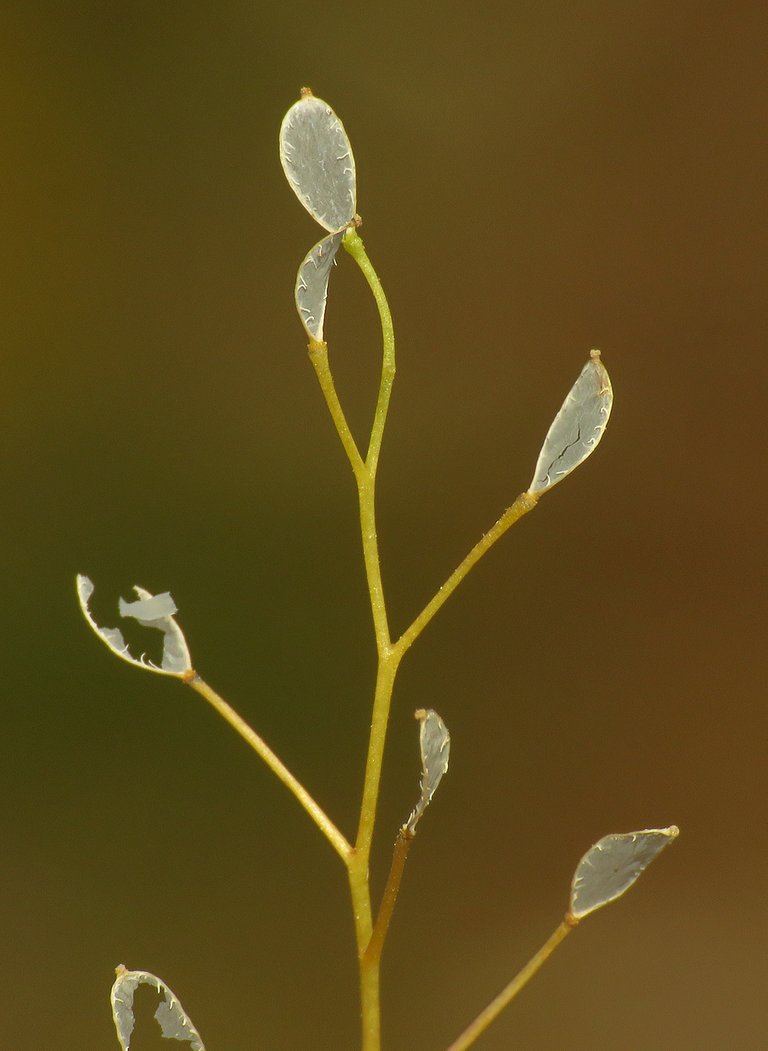
... from all these plants, and that I won't be able to show them in this post ...
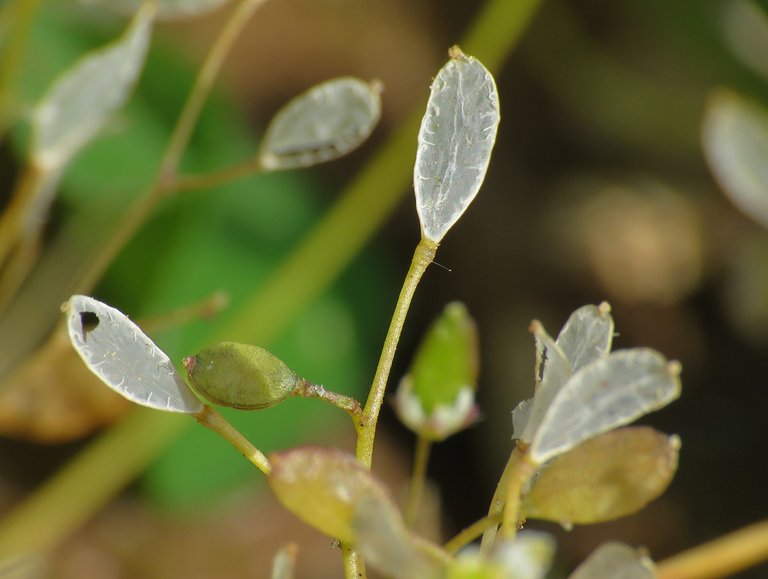
... but then ... some hours later, on another similar parchment of dry terrain ...
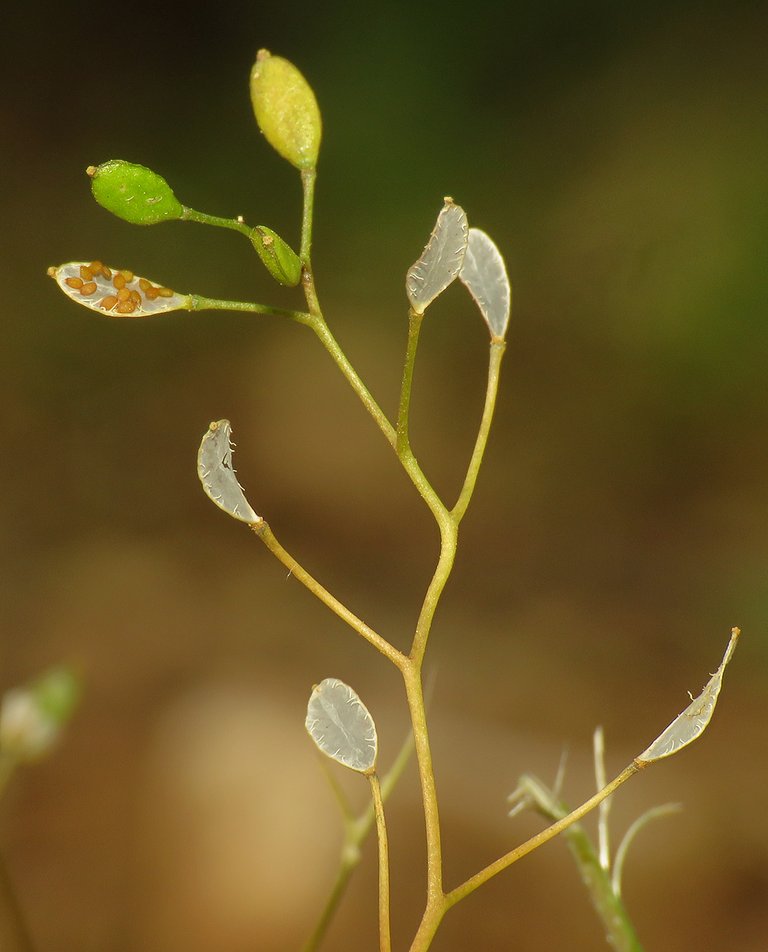
... I encountered the same species again ...
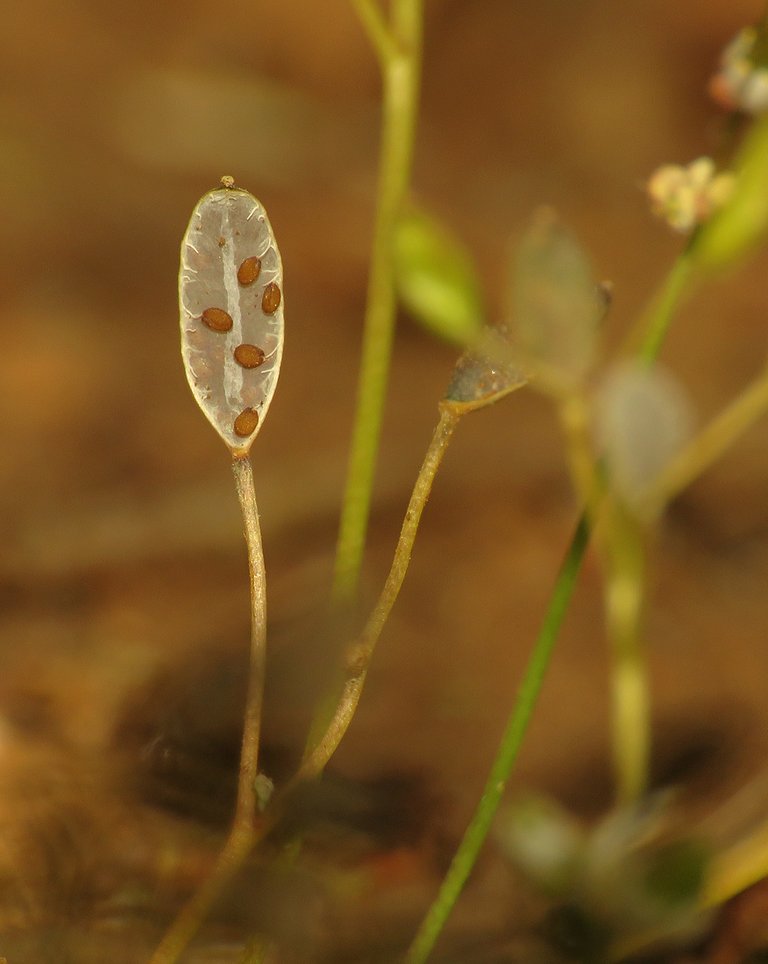
... and this time, some plants ...
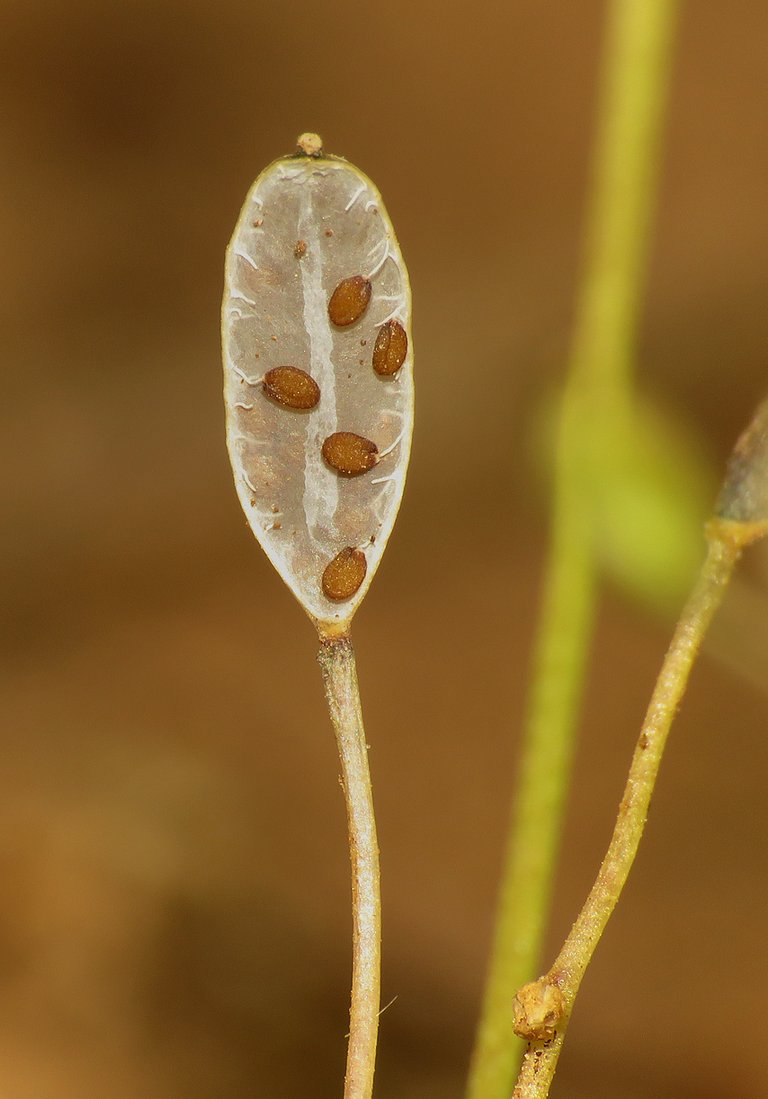
... still had a few seeds on.
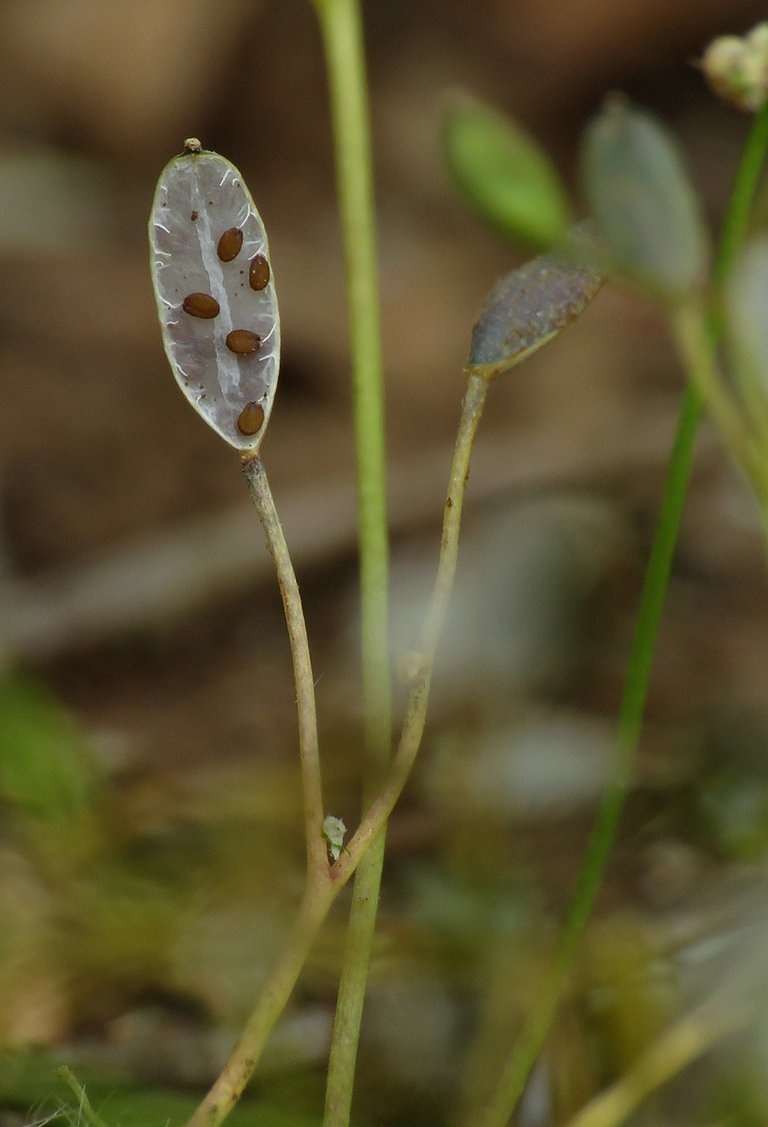
Draba muralis is the name of this species ... and here you can see a slightly different shot, taken using only the ambient light.
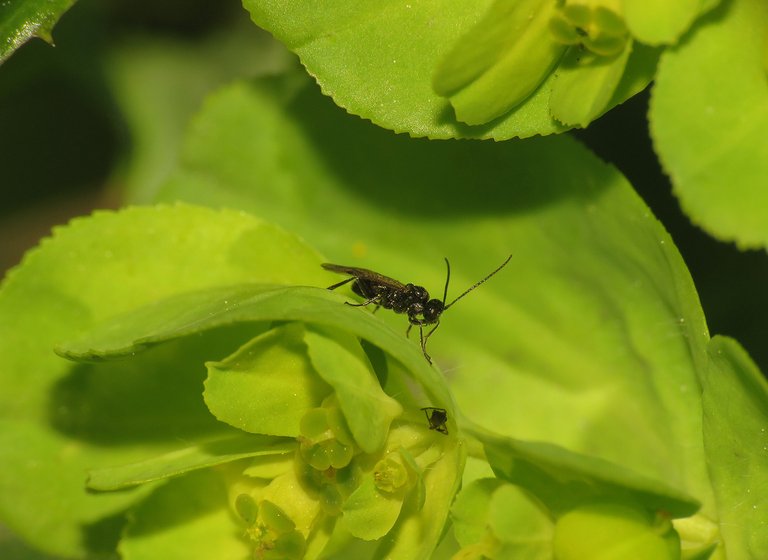
On my way back, I passed through a greener area on the other slope of the hill, further from the sea ...
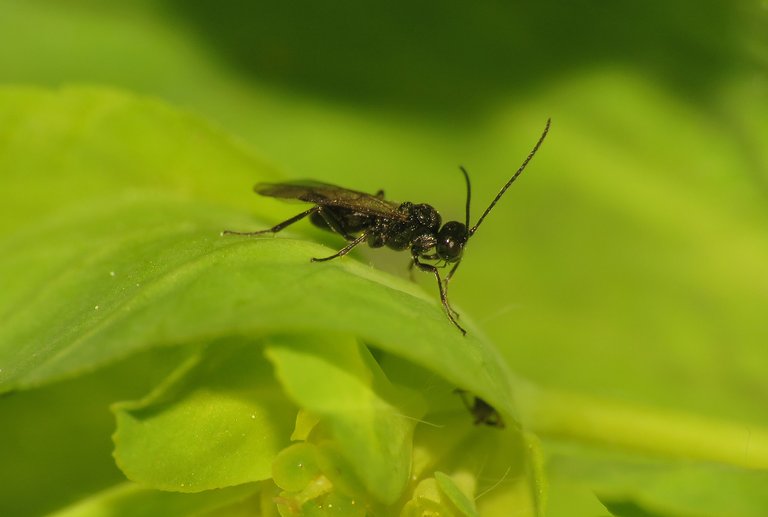
... and I stopped to take a few shots there as well. Some very small wasps ...

... and minuscule flies ... were feeding on the Euphorbia helioscopia plants.
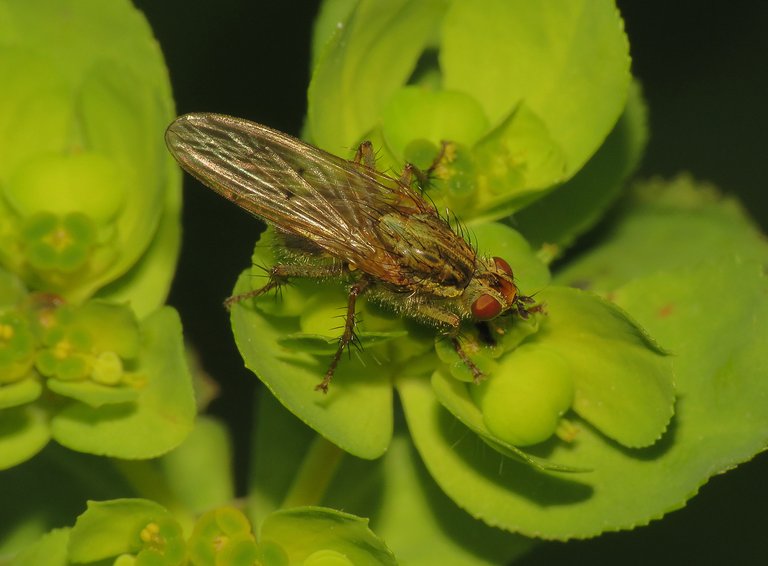
At one point a much bigger fly arrived ... the Scathophaga stercoraria ... that preys on smaller insects ... mostly other flies ... and occasionally feeds on nectar and dung as additional sources of energy.
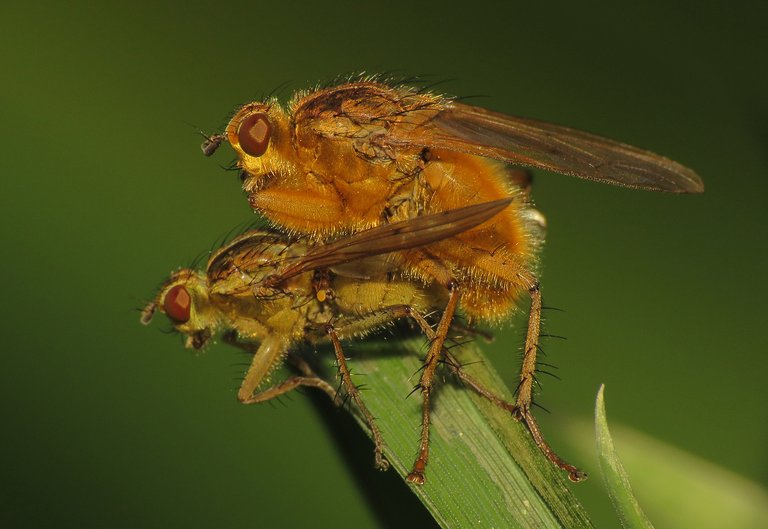
A moment later I found this mating pair of the same species ...
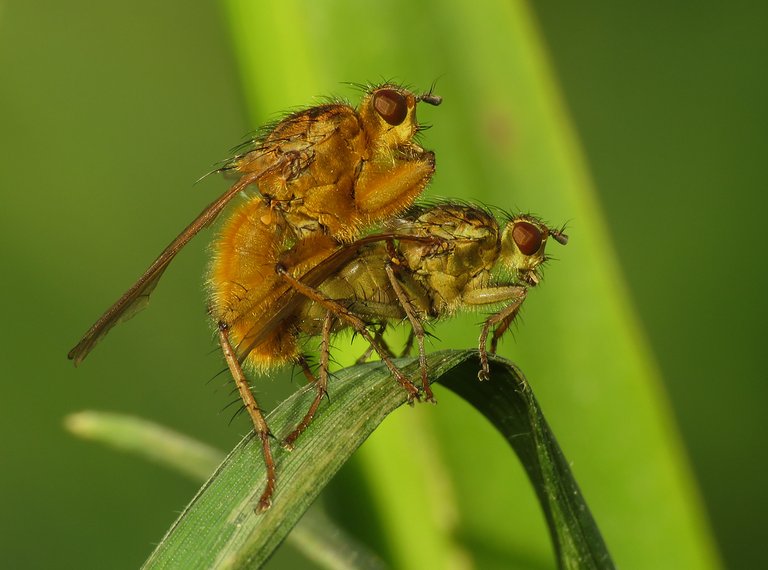
... on the long, curved blade of grass ...
... and now, with these two flies ...
... is time to end today's NEWS FROM THE MEADOWS ... as always in this series, the photographs are my work, and they were all taken today.
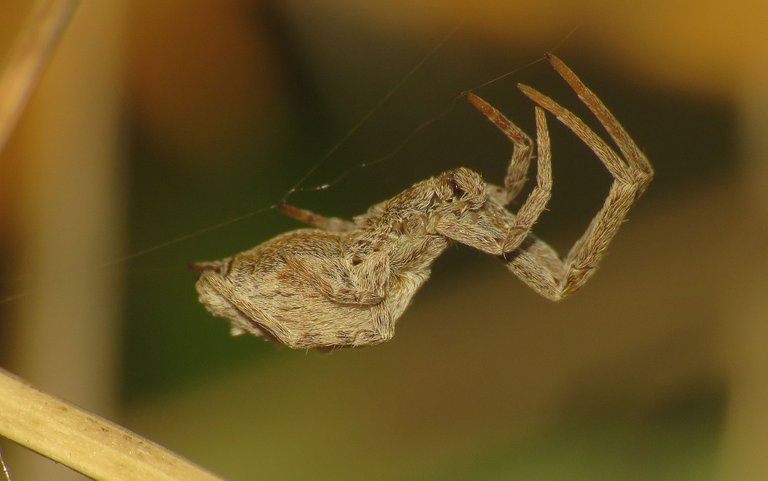
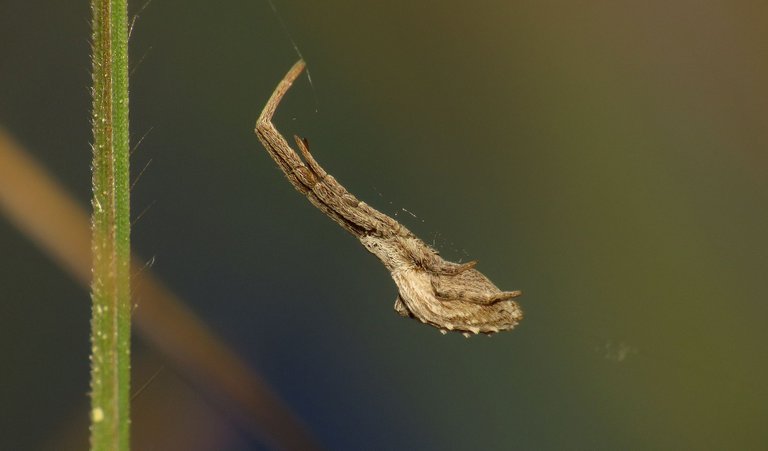
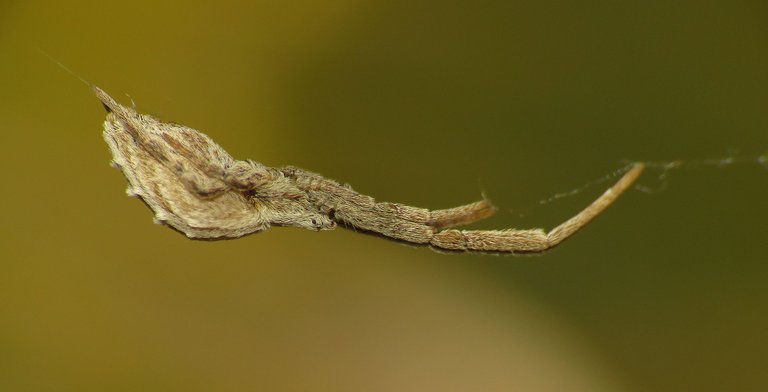
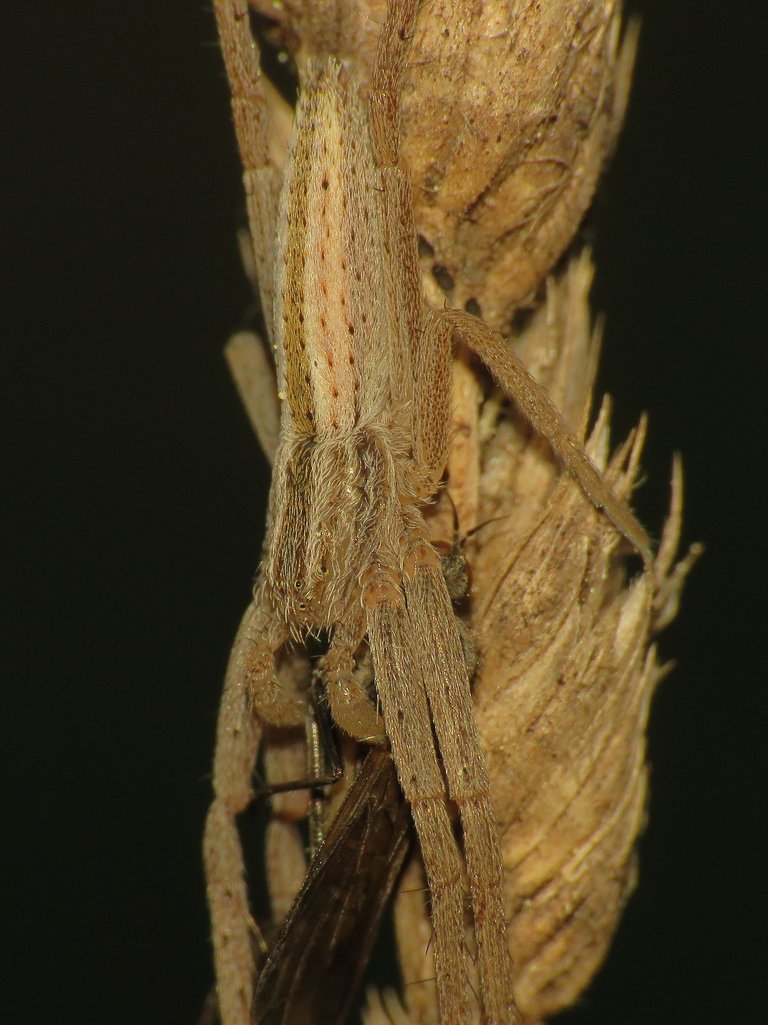
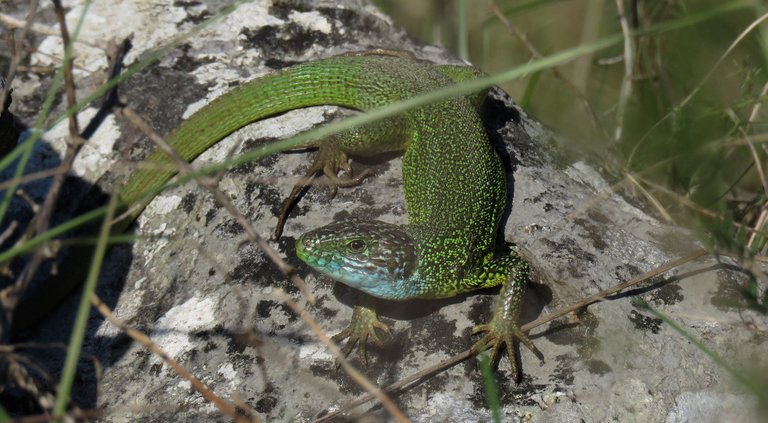
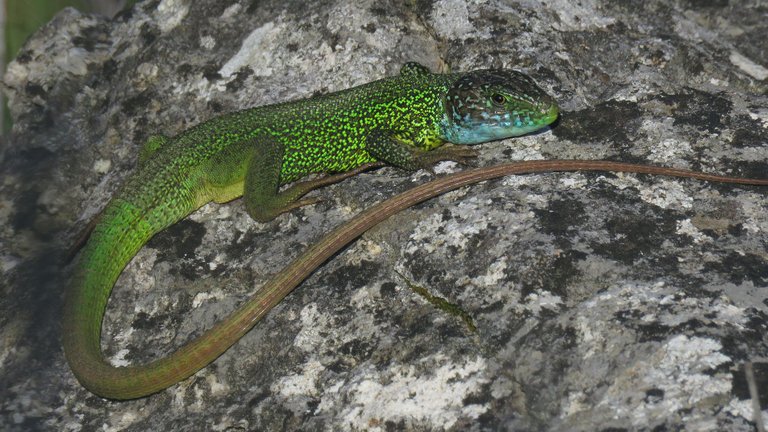
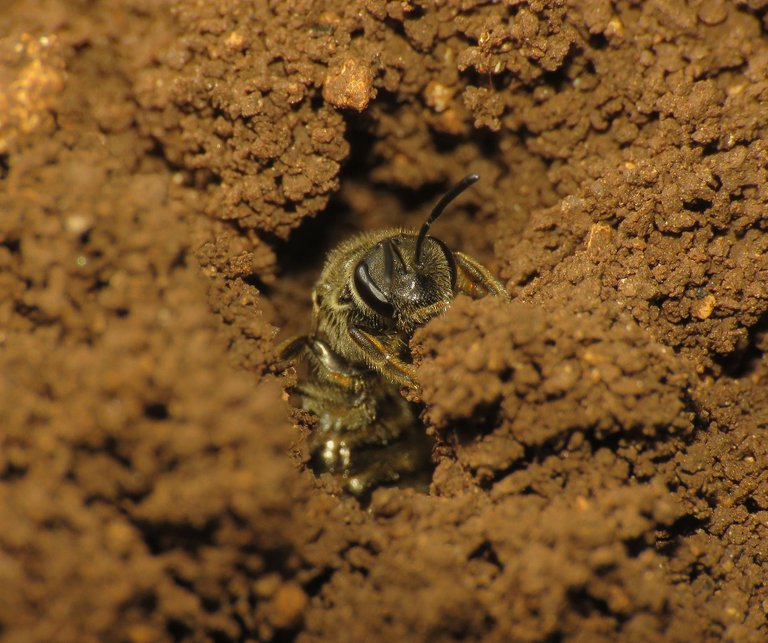
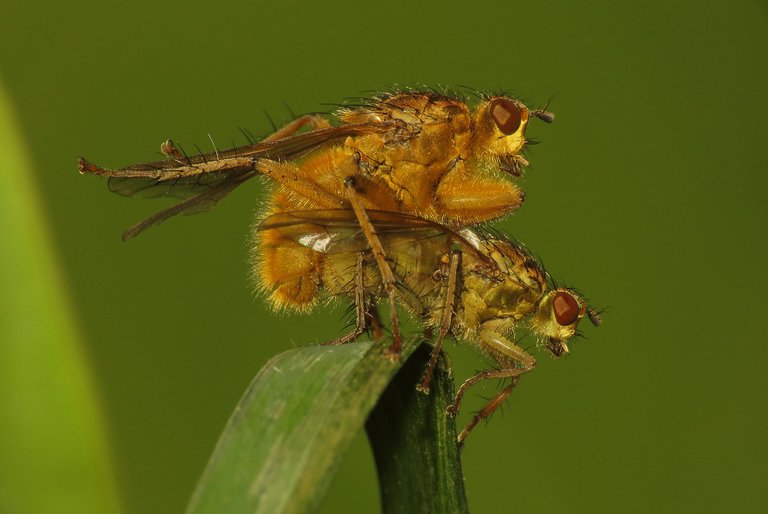
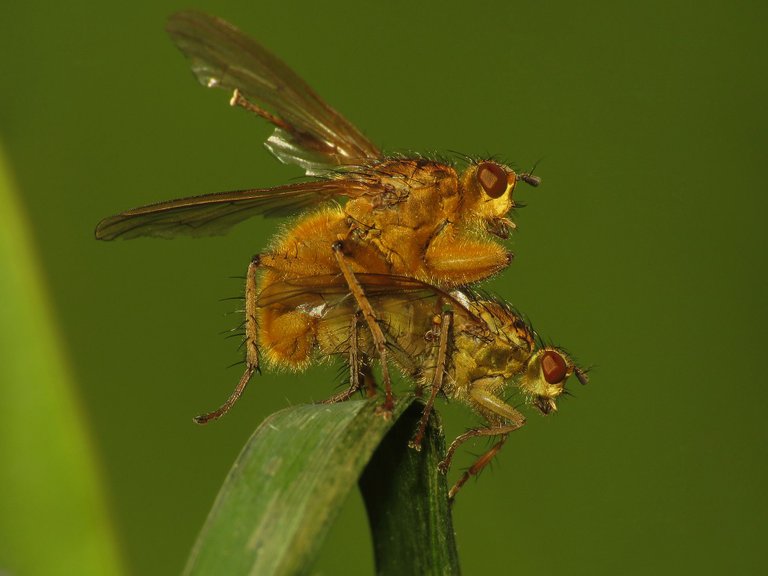
Nice said 😍
Thanks :)
There is so much beauty around us !!!
Thank you for showing me a new world!
I see you are still that pervert, why not be ashamed to spy on the eternal from the last photos? :)
Link to vote for @cranium as a witness
Amezing pitchers and photography sir 🤩😊
Thank you. :) Glad you like the post.
hello dear friend @borjan good day
Your work is worthy of admiration
I really appreciate the photographic work, review and research that you do.
Thank you very much for showing us these beautiful photographs
I take this opportunity to wish you a splendid day
Thank you :) Glad you like this nature report from my area. Have a great day.
Hello friend @ Borjan, thank you for sharing these spectacular photos from your NEWS FROM THE MEADOWS series.
I am fascinated with your photos. Congratulations.
Greetings and success
Thank you :) Have a great day.
wow ... amazing so cool ...
Thank you :)
Incredible photography, and I love the story too. I think bugs do a lot more lovemaking than people give them credit for.
Great friend, quite a coincidence that you found this specimen of the Uloboridae family. Really, in the case of this species, it does look like a dry leaf. On the other hand, I was very surprised to see this spider, if my memory serves me correctly, I think this family is cosmopolitan, and therefore, they are on different continents of our planet; I do not remember well, but I think it is so. Very nice pictures, greetings!